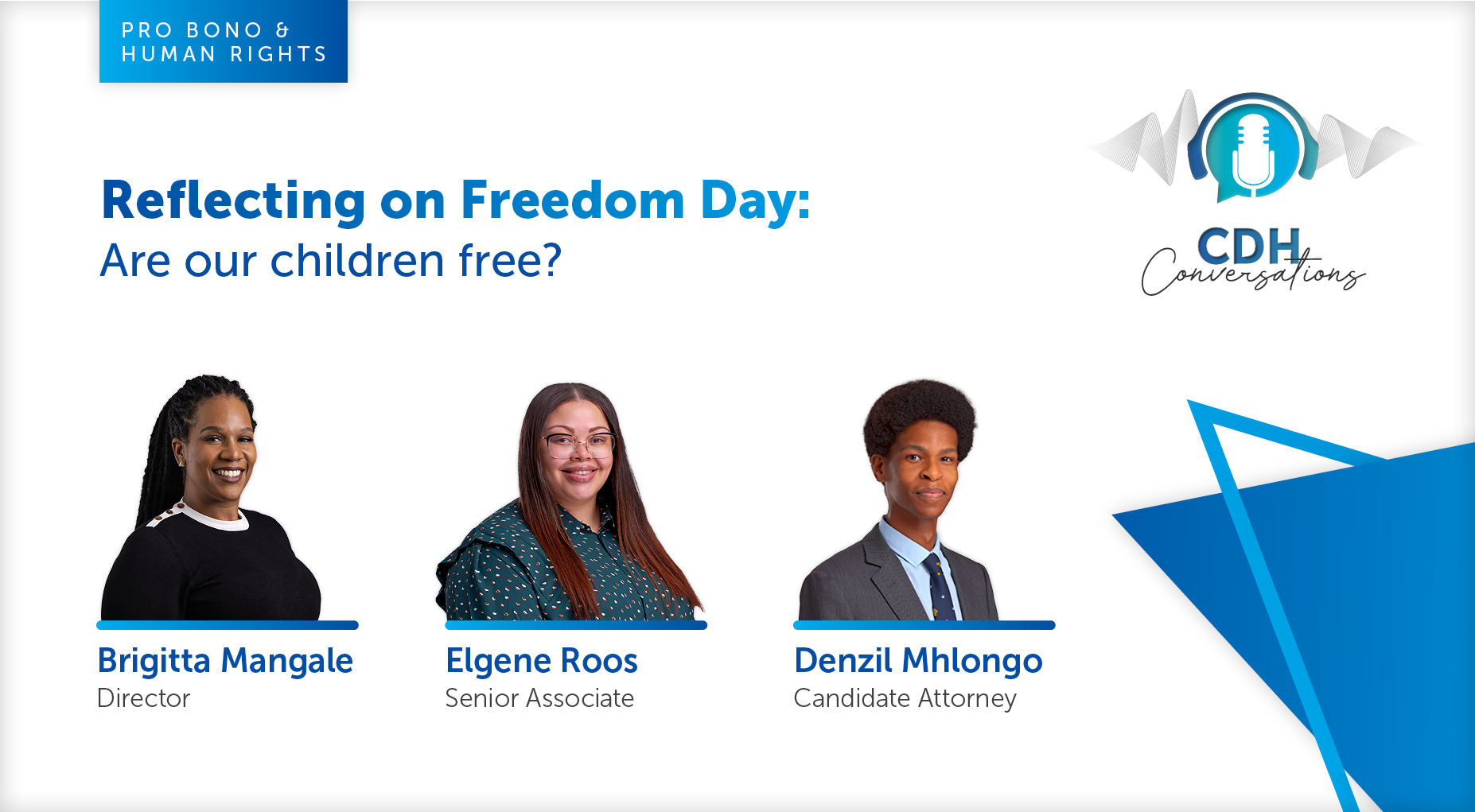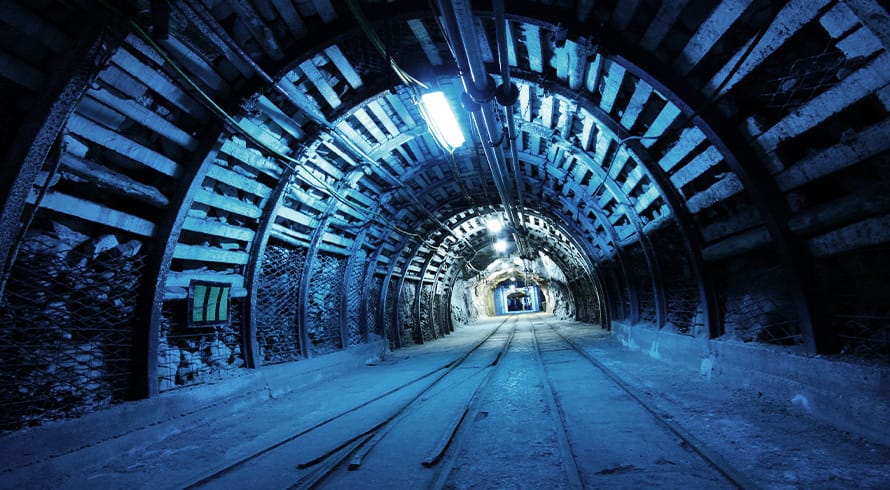The concept of lockouts and how employers may respond to a strike
At a glance
A lot of discourse within employment circles in Kenya has been about strikes. However, very little has been said about the right of employers to lockout employees. CDH Partner Desmond Odhiambo and Trainee Advocate, Kevin Kipchirchir provide expert insights into what a lockout is, the parameters of declaring a lockout and the process of declaring one. They also unpack the use of replacement labour which though not developed within Kenyan jurisprudence, has been aptly elaborated in South Africa.

The concept of lockouts and how employers may respond to a strike
Podcast
The concept of lockouts and how employers may respond to a strike
Podcast
Transcript
Transcript
Kevin Kipchirchir: Welcome to the CDH Conversations Podcast, where we'll be speaking on the concept of lockouts and how employers may respond to a strike in Kenya. My name is Kevin Kipchirchir, a trainee advocat at CDH Kenya. Joining, me today is Desmond Odhiambo, a partner at CDH Kenya in the Dispute Resolution and Employment Law Department. Welcome Desmond.
Desmond Odhiambo: Thank you, Kevin.
Kevin Kipchirchir: There abounds a lot of material on strikes within an employment relationship. However, there is a dearth of jurisprudence or material on lockouts in Kenya. Today we examine the other ways in which employers can respond to a strike, and these includes lockouts that may be exercised by employers. In particular, we'll examine the categorisation of strikes and lockouts, such as a protected or an unprotected strike and a lockout, and the options that are available to an employer in either circumstance. We also examine the recent South African decision by the Constitutional Court of South Africa in National Union of Metalworkers of South Africa versus Trenstar Pty Ltd.
With today's discussion, we intend to provide some clarity on the parameters of lockouts and by extension strikes in Kenya. This leads me to my first question to Desmond. Desmond, what is the concept of lockouts in Kenya?
Desmond Odhiambo: Thanks, Kevin. So a lockout is simply the suspension of work or the refusal by an employer to continue to employ any number of employees, for the purposes of compelling them to either drop a demand or to accept a demand made by an employer in respect of a trade dispute.
Kevin Kipchirchir: Thank you, Desmond, for providing such an insightful opener to our discussion. And adding a light to that would be distinguishing between a strike and a lockout. Could you please give us the distinction between a strike and a lockout, as you understand it in Kenya?
Desmond Odhiambo: Yes. So the difference between the two:
The strike is exercised by the employee, while the lockout is exercised by the employer.
So, in the instance of a strike, the employee withdraws his services and usually in concert with other employees for the purposes of compelling their employer to accede to their demand in respect of a trade dispute. On the flip side, a lockout is where now the employer, in respect of a trade dispute, is exercising his right to suspend the employee from continuing from any further work until they either drop their demand or come back to the negotiating table.
Kevin Kipchirchir: Thank you, Desmond. So as I understand it, therefore, it concerns a trade dispute, either whether it's a strike or a lockout.
Desmond Odhiambo: Yes. Precisely.
Kevin Kipchirchir: So bearing in mind the distinction between the two, we may proceed therefore to consider the parameters of a lockout and in this case, we seek guidance from the Labor Relations Act in Kenya. Isn't that the case, Desmond?
Desmond Odhiambo: Yes. So the Labor Relations Act gives the parameters of what would be considered as a lockout or protected lockout in legal terms. And what the Section 76 provides is that in the first place, the lockout must concern terms and conditions of an employment or the recognition of a trade union. So that's the first thing. It must relate to the terms and conditions of employment or the recognition of a trade union. And that is important in the Kenyan context because we have seen in our political space where political parties invite workers to participate in strikes for purposes of furthering a political agenda, but that is not in relation to a trade dispute.
And then secondly, the trade dispute must be unresolved through conciliation. So before an employer decides to exercise a lockout, there must have been an attempt by the parties at resolving the dispute through conciliation. So those are the parameters that Section 76 provides. And then finally, before I miss it out, is that, before an employer exercises a lockout, he also must give a seven day written notice of that intention to lockout the employees. And that notice must be given to the employees or to the representatives of the employees if they're represented by a trade union. And it also must be given to the minister in charge of labour.
Kevin Kipchirchir: Thank you, Desmond. If we may just circle back to the issue of strikes. You've just laid out the parameters of a lockout that is exercisable by an employer. Are the same parameters applicable to a strike in Kenya?
Desmond Odhiambo: Yes, absolutely. The same Section 76 also provides that for a person to participate in a strike, and for that strike to be considered legitimate or protected, then the parameters, they have to fall within certain parameters. And the parameters are that the subject of the strike must be a trade dispute. So like I mentioned earlier it should not be, for instance a political issue where the employee now is deciding to engineer or marshal employees to strike over a political issue. So it must be a trade dispute concerning either their terms and conditions of work or if it's as regards their right to participate in a trade union. So maybe an employer has refused to recognize a trade union that has attained a majority subscription of employees in that organization.
And then secondly, that trade dispute also must be unresolved after the parties have attempted conciliation. The conciliation may either happen under the parameters of what is provided in the Labor Relations Act or as specified in a collective agreement. Some collective agreements provide a private mechanism for conciliation. The employees have to demonstrate that they have attempted conciliation provided under the collective agreement, and then after that, the employees also must give a seven days written notice of the strike to their employer and to the minister in charge of labor. If all of those parameters are met, then the strike will be what is referred to as "protected". In simple terms, it will be a legal strike.
Kevin Kipchirchir: Thank you, Desmond, for that insightful remark on protected and unprotected strikes. So then we ought to remind ourselves what some of the strikes which are outlawed by the Labor Relations Act are. And for these, I think, Desmond, you may correct me, section 79 of the Labor Relations Act provides that no person can take part in a strike or a lockout if in the case of an employer, if the action contemplated by the strike or a lockout has been barred by any court award or a collective agreement or a recognition agreement, or if the subject matter of the strike is regulated by a collective bargaining agreement or a recognition agreement binding upon the parties.
Furthermore also, if the parties have agreed to refer the trade dispute, for instance, to the industrial court, which is our employment and labor relations court, or to arbitration, this strike would not be allowed on this set.
Desmond Odhiambo: Yes, you are correct. And maybe just to expound on what you have stated. So, an unprotected strike, like you mentioned, is where it has been prohibited by a court award, which is important to note because the parties must respect the decisions of the court. So where the court has prohibited it and an employee continues to participate in that strike, then it becomes unprotected, which has consequences on that employee, as we will discuss later. I think the other thing that you mentioned was if the subject matter is already regulated by a collective agreement, because you might find that the collective agreement has already settled some issues. If that has already been settled by the collective agreement, then the employees are prohibited from participating or calling a strike, in respect of that.
Maybe the ones you've not mentioned that I can highlight also is: If the trade dispute was not referred to conciliation, then that also becomes an unprotected strike. And also an important point is, if the employer and employees are engaged in an essential service. I mean, we have seen cases where doctors and nurses have called a strike and have paralyzed services in hospitals. Such strikes are unprotected because the service that they do provide is an essential one.
Kevin Kipchirchir: Therefore, as I understand it, there is a procedure for declaring a strike or a lockout, and there's also the subject matter over which a strike and a lockout can be declared. And therefore, Desmond, from your years of experience, what advice can you give employers to ring-fence themselves adequately in this area of strikes and lockouts?
Desmond Odhiambo: I think the first thing is that when it comes to even the contractual stage, I think for employers, they have to be proactive when negotiating the collective bargaining agreements to ring-fence the issues that employees are not allowed or the trade union is not allowed to declare a strike if there's a dispute over them. So that can be resolved at the contracting stage. So it's not a question of just getting the standard template that you receive from the trade union and then just acceding to it wholesale or only just be concerned with benefits and salaries and so forth.
I think employers have to take an extra step and define the areas where, if a dispute arises, then the employees are prohibited from going into a strike. For example, it could be a question of overtime. You do not want any issue to give warrant to a strike. Something like overtime can easily be resolved, even as employees continue to work. Because it's just a question of accounting for that time and making that the payment as and when it falls due.
Secondly, at the contracting stage, is to provide a mechanism for dispute resolution. A step-by-step basis for the dispute resolution or what others call a conflict resolution mechanism, where in the first instance you prescribe that the parties should at least attempt negotiation with each other. If negotiation fails then the parties should then proceed to a third party to facilitate an amicable settlement. The third party can be a conciliator or it could be a mediator. Those are the ways that employers can, or even both parties, really can ring-fence mechanisms and response to strikes and lockouts.
I think the other way which employers, and I think it's important to mention is that employers, when choosing how to respond to a strike, is first of all in examining whether the strike is protected or not. And then if it is not protected, then the employer is at liberty to move the court to get an injunction to prohibit that strike from going on, and could take disciplinary action against employees who've participated in an unprotected strike.
Kevin Kipchirchir: You've mentioned the issue of disciplinary action and moving to court to injunct employees who take part in an unprotected strike. Could you elaborate if employees taking part in an unprotected strike are entitled to payment for the period in which they take part in this unprotected strike?
Desmond Odhiambo: No, they will not be entitled to any payment during that period, and that is expressly provided for in the statute.
Kevin Kipchirchir: So therefore, listeners, we might want to highlight some of the decisions of the employment and labor relations court on the issue of lockouts and by extension strikes.
And the first case that we have found and which has been relied over and over is Fancy Kirui versus Regional Royal Transmissions Company Limited, a 2018 determination by the employment and labor relations court, which essentially laid out the procedure for declaring a lockout and the substance of declaring a lockout and that a lockout must exist within a trade dispute. And if such dispute exists, the employer is allowed to lockout its employees for the purpose of compelling them to accept any demands tabled in the trade dispute, and such lockout should not be with the intention to terminate employment where such ingredients occur. This is a protected lockout.
The case of Kenya Planters and Agriculture Workers Union versus Kakuzi Limited, a 2017 determination by the employment court as well, determined along these lines and further went on to hold that:
Unless parties resort to their own machinery of negotiation and to use the statutory conciliation and arbitration machinery for the voluntary settlement of disputes, they're prevented from resorting to a strike or to a lockout.
So it's important to highlight the sense or the direction that the employment and Labor Relations Court has taken when it comes to strikes and lockouts, so that we may be guided further. So therefore, Desmond, in light of these determinations and the provisions of the Labor Relations Act, are employers allowed to use actual locks and keys to lockout employees from their premises?
Desmond Odhiambo: That's a good question. Yeah. In as much as it is described as a lockout, it's not in the literal sense of locking the gate and preventing the employees from accessing the premises. What it means is just purely suspending the employees from continuing to provide any further services until either drop their demands or they accede to the employer's demands. So it's not in its literal sense, locking the premises.
Kevin Kipchirchir: Yeah. It always arises as a sticking point. And I guess another sticking point always, Desmond, is the issue of replacement labor and it's more prominent in other jurisdictions other than Kenya. What is the position in Kenya with replacement labor and lockouts?
Desmond Odhiambo: Yeah, so in the Kenyan jurisdiction, there's no express provision in the Labor Relations Act as to whether an employer can hire other employees to continue carrying out the work that has been left unattended by those who are on strike.
Although there are a few decisions from the labor court that we can glean from. One of the decisions is the Kenya County Government Workers Union versus the County Government of Nyeri, where the labor court prohibited the county government from engaging replacement labor in respect of the services that were being provided by the county's casual employees. It's an interesting position from the labor court. It's as if to say that if an employer decides to exercise their right of a lockout, then they must do so at their expense.
Kevin Kipchirchir: Therefore, we've seen also the employment court borrow a bit from the South African jurisprudence, and I think it's notable, Desmond, to mention what the South African perspective has been on the matter, especially on replacement labor. And that's where our analysis of the Constitutional Court's determination in National Union of Metalworkers of South Africa versus Trenstar Pty Ltd comes in. In this case, the trade union declared a strike. And then the company declared a lockout in response to the strike, which is allowed in the South African Labor Relations Act, particularly Section 67 and 68 of the Labor Relations Act.
However, the contention of the National Union was, the lockout was declared after the strike had been suspended and not terminated. And the argument of the company was, as long as the strike was not terminated, they could declare a lockout in response to the strike, and therefore use replacement labor during the lockout.
And the constitutional court of South Africa found that it was not proper to use replacement labor since the strike had been suspended by the time the company was declaring a lockout. So in a sense, the lockout was not in response to a strike, and therefore laid out that replacement labor can only be used where the company has locked out employees in response to a strike.
So, therefore, where there is a valid lockout, and it might be interesting to see where the employment and labor relations court of Kenya goes with regards to this determination. I don't know what your prospects or your prophecy, for lack of better words, would be on the ever changing jurisprudence of our employment courts?
Desmond Odhiambo: Yes. I think it's a case that is noteworthy and there's something probably our courts will also glean from. Taking into account that many of the decisions from the employment and labour relations court rely on decisions from the South African jurisdiction as persuasive. And that's because many aspects of our statutes are similar to what is provided in the South African labour statutory provisions.
So I think it's just a matter of time and I think it would give effect to the power of a lockout if the employer is able to use replacement labor during the lockout because it doesn't make sense to provide that an employer can do so, and then now prohibit them again from engaging replacement labor for the period of the lockout. So it only makes sense that they're able to exercise that right to its fullest extent.
So I think it's just a matter of time. This would also offer guidance to our courts if there's a dispute as to whether a proper lockout has been exercised.
Kevin Kipchirchir: Thank you, Desmond, for those particular insights from your years of experience in the employment department.
So well, there you have it, folks. In case of any other questions or queries regarding employment, strikes and lockouts, either in Kenya or South Africa, please feel free to contact CDH Kenya or CDH South Africa. See you in the next series of the CDH Conversations podcast. Goodbye.
The information and material published on this website is provided for general purposes only and does not constitute legal advice. We make every effort to ensure that the content is updated regularly and to offer the most current and accurate information. Please consult one of our lawyers on any specific legal problem or matter. We accept no responsibility for any loss or damage, whether direct or consequential, which may arise from reliance on the information contained in these pages. Please refer to our full terms and conditions. Copyright © 2026 Cliffe Dekker Hofmeyr. All rights reserved. For permission to reproduce an article or publication, please contact us cliffedekkerhofmeyr@cdhlegal.com.
Subscribe
We support our clients’ strategic and operational needs by offering innovative, integrated and high quality thought leadership. To stay up to date on the latest legal developments that may potentially impact your business, subscribe to our alerts, seminar and webinar invitations.
Subscribe




